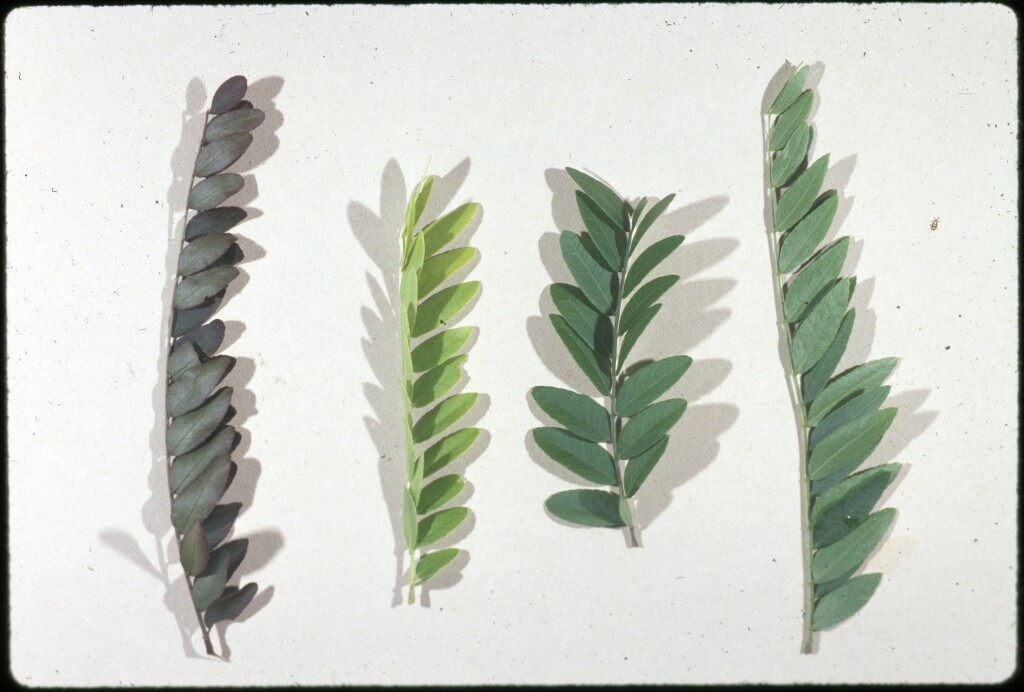Gleditsia triacanthos
L. Honey LocustTree to 25 m high, usually armed with spines to c. 18 cm long. Leaves 15–20 cm long, pinnate or bipinnate; pinnate leaves mostly with 10–15 pairs of pinnae; bipinnate leaves with 2–13 pairs of pinnae, leaflets 12–30 per pinnae, elliptic to ovate, mostly 10–35 mm long, 5–12 mm wide, sparsely toothed. Flowers yellowish-green, in slender racemes to c. 13 cm long; male flowers sessile, densely clustered; bisexual flowers pedicellate and well-spaced. Sepals lanceolate, 3–4 mm long; petals ovate to ovate-lanceolate, 4–6 mm long; ovary densely pubescent. Pod oblong, somewhat falcate, 15–40 cm long, 3–4 cm wide, dark brown, pilose; seeds 15–25, ovoid to elliptic, c. 10 mm long, embedded in thick pulp. Flowers spring–summer.
VVP, VRiv, MuF, GipP, NIS, HSF, HNF. Native of North America, cultivated as an ornamental or shade tree. Seedlings produced by planted trees have been recorded in paddocks in north-eastern Victoria.
This species is serious weed in New South Wales and Queensland where plants are known to reproduce from seed and suckers, often forming dense thickets along watercourses.
 Spinning
Spinning




